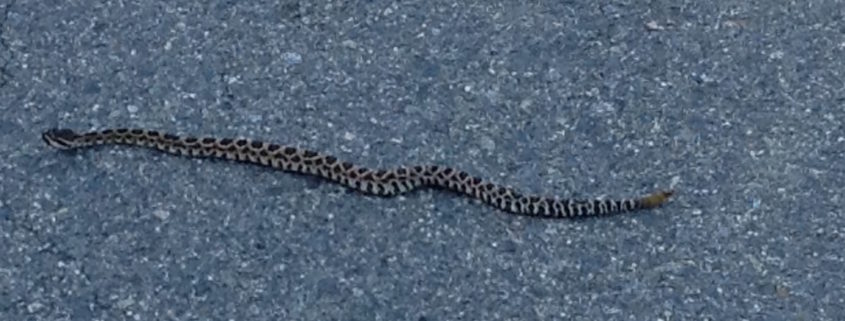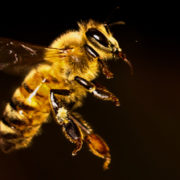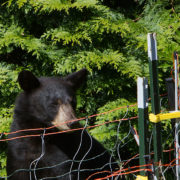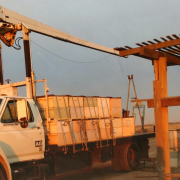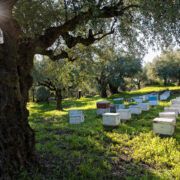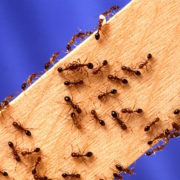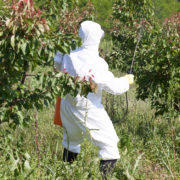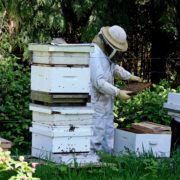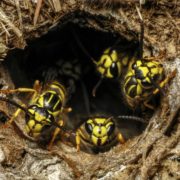California Diamondback
One of the most enjoyable parts of working with bees is having the opportunity to work outside within the beauty of nature. In the semi-rural areas of Southern California, where our apiaries are located, we regularly run across all sorts of animals. In the course of a typical day, we are almost always greeted by chirping birds – finches, mockingbirds, jays, woodpeckers – and even wild peacocks and turkeys. Occasionally we meet up with a coyote or two, and sometimes even catch a glimpse of a roadrunner scurrying through the bee yard.
Not as enjoyable, however, is when we encounter rattlesnakes. You might think that bees and rattlesnakes would keep their distance from one another, and that a beekeeper would not be at much risk of running into rattlesnakes. Unfortunately, you would be wrong. Rattlesnakes love burrowing under beehives. The bees don’t bother them, nor do they bother the bees. It is a perfect arrangement for the rattlesnake; the beehives provide shade in the summer and naturally warm temperatures at night. Being cold-blooded, rattlesnakes are pleased to discover that relaxing below a buzzing beehive provides a temperature-controlled canopy year-round. Not only that, the beehives offer excellent cover from birds of prey and other nuisances . . . such as humans.
Although not an everyday occurrence, several times a year we find ourselves face to face with a rattlesnake. While harvesting queen bees for sale, and taking equipment back to the shop, we have to pick-up our queen mating nucs off the ground. When a colony comes off the ground and we discover a coiled rattler underneath, our hearts skip a beat, or two. That look, with the flat head, diamonds across the back, and a rattle at the end of its tail is unmistakable. And, just in case there is any mistaking the look, a small shake of the rattle leaves little doubt of what’s at hand!
So far, no one here at Wildflower Meadows has ever been bitten, as each of our beekeepers have learned and practice what we call the beehive “two-step”: lift the colony, take two steps back. More often than not, the rattlesnake will move away on its own, far out of the bee yard and into another crawl place. Other times, we will very carefully relocate the snake with a stick. We haven’t had to kill one yet, and really don’t want to. The rattlesnakes, frightful as they may be, are a natural part of our ecosystem, our apiaries, and a big plus to us beekeepers in helping to keep the rodents away.

